Written by Anasuya Chatterjee and Indranil Ghosh


Wildlife exploitation as the primary origin of viral outbreaks :
Mankind has witnessed several deadly viral outbreaks in recent years- the SARS outbreak. MERS epidemic, Ebola virus outbreak, NIPAH epidemic and the worst of them all- the ongoing SARS-CoV-2 pandemic. A deep investigation into their origins reveals a very dark secret we find unpleasant to hear- human exploitation of wildlife.
“Nature is sending us a message with the coronavirus pandemic and the ongoing climate crisis” according to the UN’s environment chief, Inger Andersen. Humanity has been placing too many pressures on the natural world with damaging consequences, and failing to take care of the planet meant not taking care of ourselves. The Covid-19 outbreak is a “clear warning shot”, proving the fact that multifarious deadly diseases existed in wildlifeand continued exploitation of them by humans would only exacerbate the process of viral spillover events to Homo sapiens. Illegal exploitation of wildlife for food, medicine and fashion purposes act as an effective bridge for viruses to jump host species and establish successful spillover events. 2/7 Index patients in majority infection clusters of epidemics are wet- trade handlers/restaurant chefs.
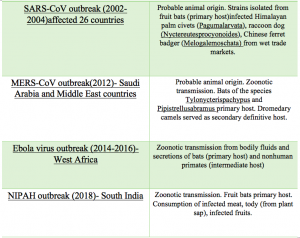
Identifying the spillover hotspots
A total of 10 viruses currently exist on Earth and more than two-thirds of them are zoonotic. Zoonotic diseases are the highly infectious ones, caused by a pathogen and transmitted from an animal (vertebrate likely) to humans. Fortunately, only 219 species exist that are known to infect humans but the curve when extrapolated shows the possibility of many more lurking in wildlife.
Until earlier this year, most people had never heard of the term “wet market,” but the coronavirus pandemic has thrust it into the limelight. Somewhat akin to farmer’s markets, wet markets are typically large collections of open-air stalls selling fresh seafood, meat. In China, they’re a staple of daily life for many. The Huanan market, for example, had a wild animal section where endangered, keystone species were for sale: snakes, beavers, porcupines, and baby crocodiles, among other animals.
Illegal wet-market trade, bushmeat trade, skin and scales trade, poaching are at the crux of the disease transmission from animals to humans. From the above data, it is quite evident that these wet markets have served as the “Ideal Mixing Bowl” for viruses. Animals illegally cramped in filthy conditions exacerbate the cross-species viral transmission that only leads to evolved, more infectious ‘hybrid viruses.
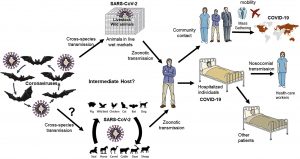
Figure 1. From SARS to COVID-19: A previously unknown SARS- related coronavirus (SARS-CoV-2) of pandemic potential infecting humans – Call for a One Health approach
The infamous Hunan seafood market, Guaondong province, Wuhan, China might be the possible origin of the current pandemic. There’s no concrete scientific evidence as of yet but given the similarity of SARS-CoV-2 to bat SARS-CoV-like coronaviruses in bats, it is highly probable that bats serve as reservoir hosts for its progenitor and the source is indeed of animal origin. The RaTG13 viral strain sampled from a Rhinolophus affinis bat, is ~96% identical overall to SARS-CoV-2.Malayan pangolins (Manis javanica) illegally imported into Guangdong province contain coronaviruses similar to SARS-CoV-2.
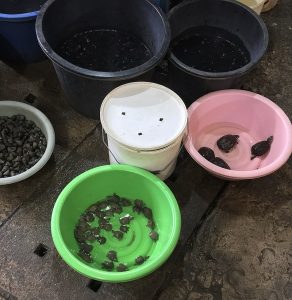
Chiang Mai, Thailand
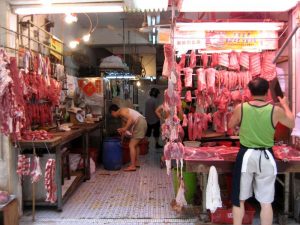
Chinese Wet Market
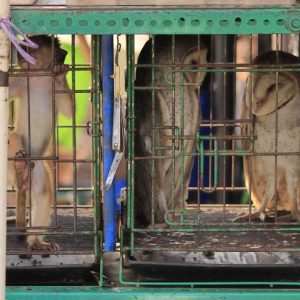
Chinese Wet Market
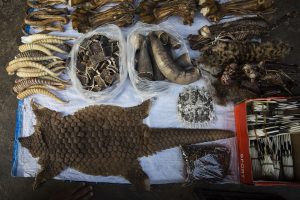
Pangolin trade, Africa
Figure 2
Figure 2 shows few images of illegal live wet market trade in different parts of the world(not just China!) exotic, endangered animals otherwise listed on the IUCN RED DATA list (ex- yellow breasted buntings) are caught, trapped in cages, skinned alive and eaten. This grotesque act is entirely anthropogenic and quite ironically, we are now reaping the consequences of what we had sown.
Preventing the deja-vu
Permanent ban on wildlife trade, strict legal enforcements and heavy penalization of offenders, are quintessential to prevent another global health emergency. Mindless human activities that exploit animals and breach into their habitats shall generate another pandemic in the near future- this is not clairvoyance but conventional wisdom.
“We fear the most, what we understand the least”. Oversimplification of scientific facts and misinterpretations have generated some fallacies against wildlife like annihilation of potentially dangerous animals could end the ongoing crisis and bats have faced the worst backlash. Cutting down trees and killing them only worsens the situation. The exact animal origin of SARS-Cov-2 is not yet proven. The virus also cannot be directly transmitted to humans from bats. They perform vital ecosystem activities like pollination and pest control. Human activities like their illegal consumption and encroachment upon their habitat elevate the risk of new pathogen emergence.
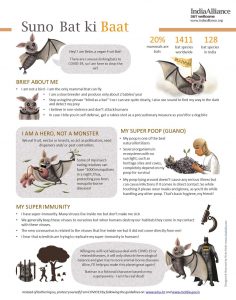
Figure 3
Humans and bats have a long history of co-existence and their conservation is vital for ecosystem and biodiversity. Not just bats, all forms of wildlife. Cessation of their exploitation and leaving their habitat undisturbed is the best way of prevention.
Precautionary measures for animal care during COVID-19 crisis
Ecological habitat destruction, deforestation and other anthropogenic activities are responsible for animal interventions in human residential areas. Illegal wet trade markets need to be abolished by legislature at any cost- not only on grounds of humanitarian causes and animal rights but also several of them are reservoirs of trillions of unknown viruses that might cause a similar pandemic in near future.
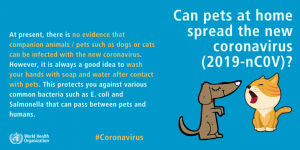
No scientific evidence yet of transmission from infected human patients to pets or domestic animals but it is wise to follow these precautions to ensure proper pet care and safety:
The roads and skies are now less filled with travellers; the air we breathe is so clean, forests once charred in raging infernos are scuttled with new blooming vegetation and wildlife. Nature indeed has its own way of restoring balance. Someday when the vaccine will finally be developed, let “The Great Realisation” dawn upon mankind and they rectify their ways allowing peaceful co-existence between wildlife and humans that would bring not only tranquillity and ecological sustenance but also prevent another cataclysmic outbreak.
References:
Shi, Nature Reviews Microbiology 17, 181–192 (2019).
About the Author:
Anasuya Chatterjee is a 4th year student of Biotechnology at St. Xavier’s College, Kolkata, India.
Indranil Ghosh is a 5th year student of Chemistry at NISER, India.